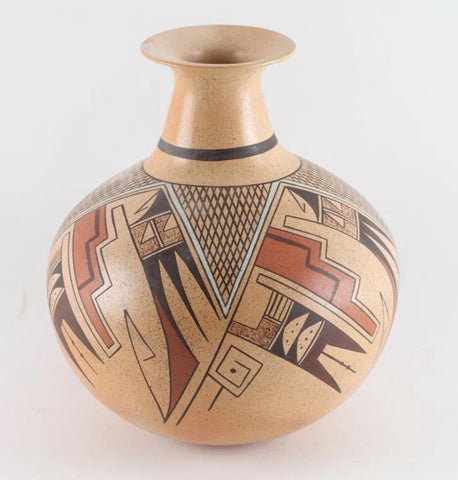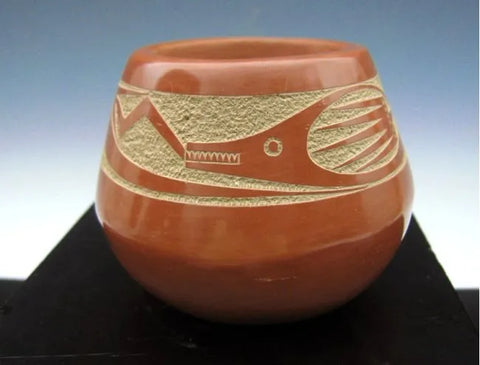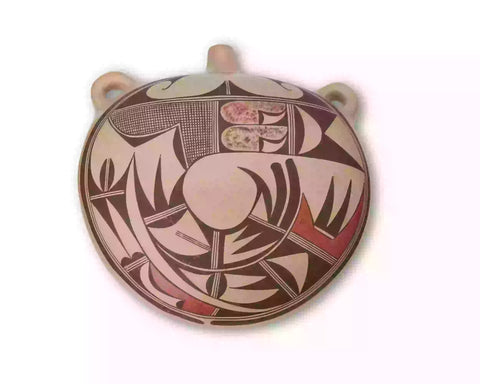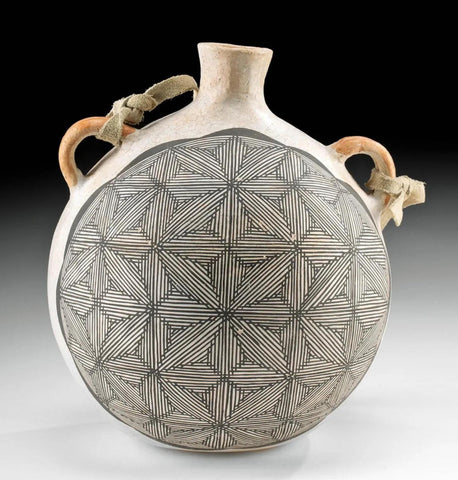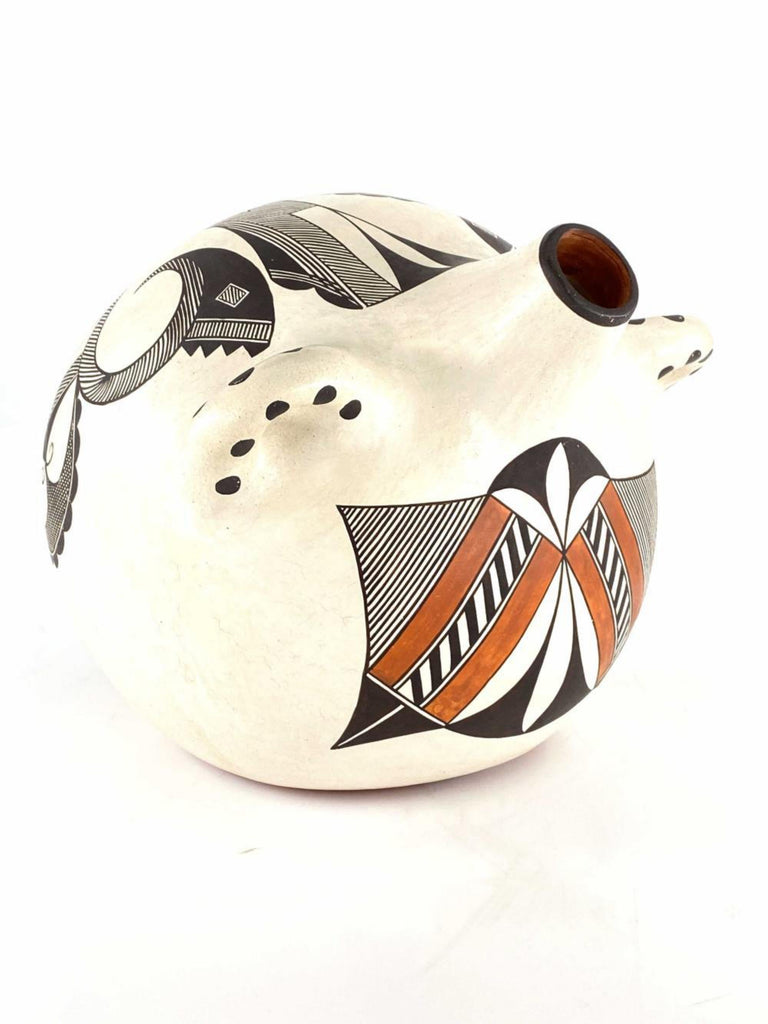
Native American Vintage Acoma Mimbres Polychrome Pottery Canteen, by Wanda Aragon, 1992, #1547 SOLD
$ 3,200.00
Native American Vintage Acoma Mimbres Polychrome Pottery Canteen, by Wanda Aragon, 1992, #1547
Description #1547 Native American Vintage Acoma Mimbres Polychrome Pottery Canteen, by Wanda Aragon, 1992. This Large Vintage Polychrome Acoma Canteen by Wanda Aragon or Dzinats 'Ituwits' features a wonderful Mimbres design of a heartline deer! Hand built and formed, the free-hand painting is exceptional. It displays traditional pueblo patterns with symbolic imagery painted in brown and red on a cream base. It's signed, dated 1992 and hallmarked with a rain cloud. This Large Vintage Polychrome Acoma Canteen is a unique piece of art, that you'll love to show off in your home or office!
Dimensions: 9 x 9.5 in.
Condition Report: This piece is in great condition, with wear commensurate with age.
Provenance: Wanda Aragon (1948- ) is the daughter of Frances Pino Torivio and comes from a family of artisans that have been creating pottery, as early as the 1900's. Her work is highly collectible and is in the Heard Museum. Wanda Aragon (1948 – present) Dzinats’ituwits’a is perhaps the premier Acoma Pueblo potter in making exquisite miniature pottery vessels. Her jars, measuring less than 2 inches, are formed to perfection and painted in unbelief precision. Wanda is the daughter of Frances Torivio. Wanda has been recognized with awards for over 25 years at Indian Market, Heard Museum Show, Eiteljorg Museum Market and many others. She is a traditionalist, following Acoma Pueblo traditions in gathering clay, respecting Mother Earth, and initiating life in her pottery.
Some background on Pueblo pottery making follows:
“Pueblo pottery is made using a coiled technique that came into northern Arizona and New Mexico from the south, some 1500 years ago. In the four-corners region of the US, nineteen pueblos and villages have historically produced pottery. Although each of these pueblos use similar traditional methods of coiling, shaping, finishing and firing, the pottery from each is distinctive.
Various clay's gathered from each pueblo’s local sources produce pottery colors that range from buff to earthy yellows, oranges, and reds, as well as black. Fired pots are sometimes left plain and other times decorated—most frequently with paint and occasionally with applique. Painted designs vary from pueblo to pueblo, yet share an ancient iconography based on abstract representations of clouds, rain, feathers, birds, plants, animals and other natural world features.
Tempering materials and paints, also from natural sources, contribute further to the distinctiveness of each pueblo’s pottery. Some paints are derived from plants, others from minerals. Before firing, potters in some pueblos apply a light colored slip to their pottery, which creates a bright background for painted designs or simply a lighter color plain ware vessel. Designs are painted on before firing, traditionally with a brush fashioned from yucca fiber.
Different combinations of paint color, clay color, and slips are characteristic of different pueblos. Among them are black on cream, black on buff, black on red, dark brown and dark red on white (as found in Zuni pottery), matte red on red, and poly-chrome—a number of natural colors on one vessel (most typically associated with Hopi). Pueblo potters also produce un-decorated polished black ware, black on black ware, and carved red and carved black wares.
Making pueblo pottery is a time-consuming effort that includes gathering and preparing the clay, building and shaping the coiled pot, gathering plants to make the colored dyes, constructing yucca brushes, and, often, making a clay slip. While some Pueblo artists fire in kilns, most still fire in the traditional way in an outside fire pit, covering their vessels with large potsherds and dried sheep dung. Pottery is left to bake for many hours, producing a high-fired result.
Today, Pueblo potters continue to honor this centuries-old tradition of hand-coiled pottery production, yet value the need for contemporary artistic expression as well. They continue to improve their style, methods and designs, often combining traditional and contemporary techniques to create striking new works of art.” (Source: Museum of Northern Arizona)







